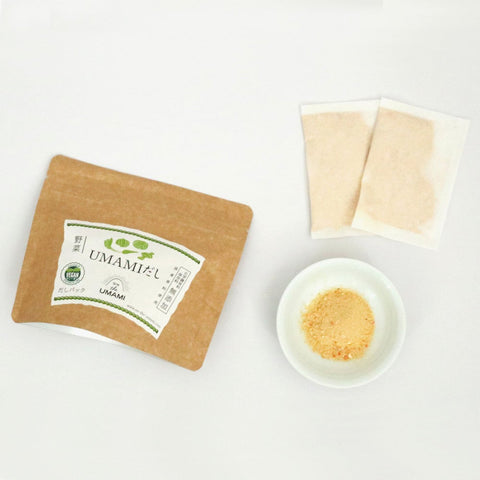An Essential Guide to Ramen Types
What are Ramen Noodles?
When you think of ramen, you might visualize wavy threads of yellow noodles in a crinkly package or a Styrofoam cup that Japan introduced to the West a few decades ago. But did you know that ramen, the quintessentially Japanese noodle dish, goes back centuries and leads straight to China?
Ramen, which is made from wheat flour, comes from the Chinese word lāmiàn, or pulled noodles. This is because the dough is repeatedly stretched, twisted, and folded into loops during the noodle-making process. Ramen is mentioned in Chinese texts dating back 500 years. Ramen was probably introduced to Japan in the late 19th or early 20th century from Chinese immigrants living in Yokohama Chinatown. Ramen has firmly taken hold in Japan, with an estimated 5,000 ramen shops in Tokyo alone!
The three main types of ramen are shio ramen (salt), shoyu ramen (soy sauce), and miso ramen. Tonkotsu ramen and karē ramen (curry) are two popular types.
Where to Buy Ramen Noodles
Move over, dehydrated ramen! Setagaya Ramen is a four-serving package of fresh, high quality noodles made by ramen virtuoso, Chef Maejima. You’ll notice a big difference in the chewy texture of noodles when they are fresh and supple. This set is an example of shoyu ramen (soy sauce ramen), which is always a crowd-pleaser due to the deep but mild flavor and clear brown broth.

Hirugao Shio Ramen is also a four-serving pack of fresh noodles, this time in the shio ramen style. Shio, which means salt, has a clear umami broth that is usually made from chicken stock and has a variety of vegetables or garnishes. Shio ramen is a great choice for more picky eaters. They will surely love this most traditional, oldest, and mildest version of ramen.

Kyoto Muteppo Tonkotsu Ramen is another top shelf fresh ramen that is well-known around town. Tonkotsu broth is made from pork bone, which gives ramen a thick and creamy base. With its hearty broth and thick spongy ramen noodles, tonkotsu ramen is perfect for hungry people who want to fill up but also want a mellow flavor profile.

For the quickest way to satisfy your hunger without compromising taste, you can’t go wrong with an instant ramen that has a tried and true reputation. Look no further than Nissin Raoh: Rich Miso Ramen. Miso ramen broth has a thicker texture, saltier flavor, and more depth in a savory, umami soup.

If you can handle more spice, be sure to try Nissin Raoh: Spicy Tantan Ramen. This spicy ramen has a Sichuan-inspired jolt of chili that will tickle your taste buds!

How to Make Ramen Noodles
Ramen is fairly straightforward to make at home. Don’t be intimidated! Just get the broth started early if you’re making it from scratch, because it tastes best if it has simmered all day. And make sure you buy all your toppings in advance.
The possible garnishes for ramen are actually too numerous to list! Some examples of ramen toppings include sliced pork (chāshū), hard boiled egg, fish cake slices (kamaboko), nori, pickled ginger, bamboo shoots (menma), scallions, and even corn.
Let’s go through a very simple ramen recipe for what we’ll call Naruto ramen. The favorite ramen of Naruto, a ninja character in a popular manga, happens to be miso ramen.
Here’s how to make a bowl of miso ramen noodles in the most basic, ‘bare-bones’ sort of way for newbies:
- Prepare a chicken or pork soup stock or buy it premade.
- Add Dashi Powder: Bonito & Kombu to give it a little taste of the sea without being overpowering.

Dashi Powder: Vegetable is a good vegetarian alternative. The flavor of onions, ginger, carrots, and cabbage give it a nice aroma and robustness.

- >Add a few scoops of miso paste to the broth and let it simmer.
- Meanwhile, cook some pork to taste and slice it thinly. Pork shoulder is recommended.
- Hard boil a few eggs. The ramen egg yolk should be fairly soft without being runny.
- Get more toppings ready, such as pork, corn, cabbage, bean sprouts, or whatever grabs your fancy!
- Prepare some fresh or instant ramen noodles in a separate pot.
- Ladle some broth in a bowl, add the cooked noodles, and top off with pork and all your selected toppings.
- Sprinkle some spices from the Shichimi Powder Set on top of your creation for a final embellishment. The subtle hints of onion, yuzu, pepper, and nori combine to make the perfect Japanese flourish.

Voilà, you can take pride in your first effort at making a simple bowl of ramen! You’ll most likely make little adjustments to your recipe each time you make it now that you’re a proper ramen chef. Itadakimasu (cheers to the cook)!
By Megan Taylor Stephens
Author Bio








































